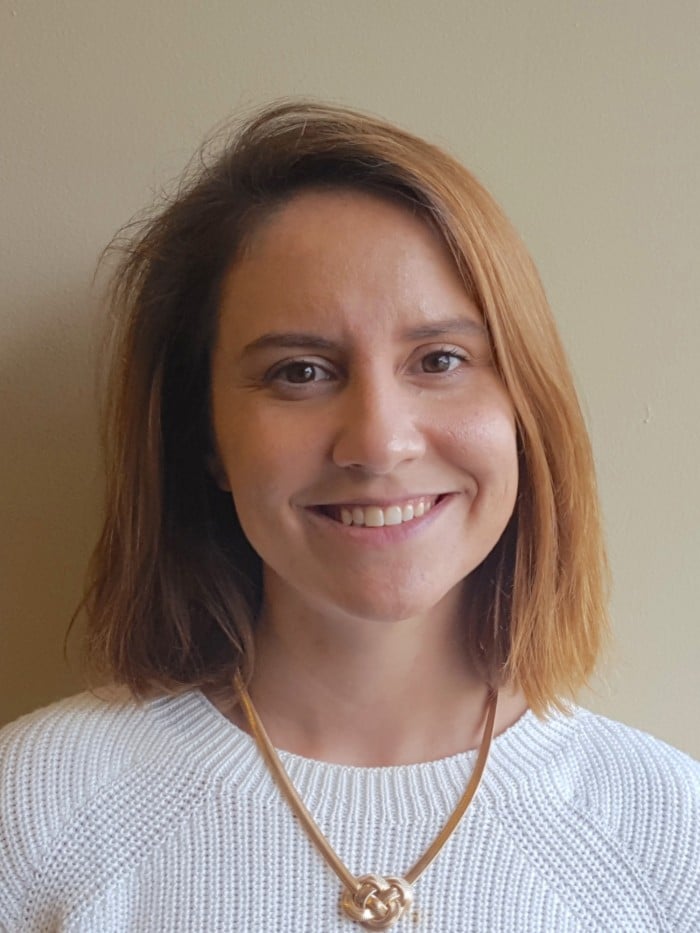MIT’s “disqualified” donors aren’t necessarily banned from donating, says Media Lab whistleblower

Last week, the director of MIT’s famed Media Lab, Joichi Ito, resigned after reports about his relationship with the disgraced financier Jeffrey Epstein. The New Yorker reported that Ito had taken donations from Epstein—at the time already convicted of soliciting a minor for prostitution—and tried to conceal them, even though MIT listed Epstein as a “disqualified” donor.
Signe Swenson, a former fund-raiser at the Media Lab, leaked the emails that brought Ito down with the help of Whistleblower Aid. We talked to her in an attempt to better understand how fund-raising worked and what the rules were around accepting donations.
Much of what Swenson told us has already been reported elsewhere. The main new clarification is that she says the “disqualified donors” list didn’t usually mean a donor’s money was off limits under MIT’s rules, but just that the person was considered unlikely to donate. She also reiterated claims, buttressed by the emails, that at least one MIT officer outside the Media Lab knew of the Epstein donations. (In a community-wide email sent out today, MIT president Rafael Reif acknowledged that senior administration were aware of Epstein's donations to the Media Lab and agreed they should be accepted anonymously.) This interview has been lightly edited for clarity.
What was the situation with Media Lab and Epstein when you first joined?
I joined the Media Lab in May 2014, but awareness around Epstein started earlier. The anonymous foundation gifts had already been happening. I became aware of it around the time I applied for the job, and started to be informed about the Epstein relationship and that they were making plans to cultivate bigger gifts. We began to have discussions about, well, how can we take larger gifts from Jeffrey Epstein? The plan to have [Microsoft founder Bill] Gates and [private equity billionaire Leon] Black give to MIT came about through those discussions, and that became the method of Epstein’s giving.
Between Joi and the development people, it was viewed that though the money was coming from Gates and Black, the money was Jeffrey’s. When he came to MIT, he took credit for having secured those funds for the lab, and he was helping to decide how that money was spent.
When you first learned Epstein would be donating to the Media Lab, you told Peter Cohen, then the Media Lab’s director of development, that he was on the “disqualified donors” list. Who has access to that list and who maintains it? What does “disqualified” really mean?

Only development staff had access to this list. For specifically the 1.0 prospects—which are the top prospects—myself and a couple other support staff would have been charged with actually making changes to the status of the donors.
Some of that was automated. If somebody gives a gift, they’re immediately put into the “sustain” category, but “disqualified” status was a manual status. If there was a prospect where they reached out three times to try and cultivate them and then got no response or negative response, based on those contact reports, someone would have made them disqualified. Usually, it just indicates it would be a waste of time for a development officer to pursue this relationship.
Certainly [I believe] Epstein was disqualified because of the pedophilia conviction, but being disqualified clearly didn’t stop any money coming from Epstein. Typical donors have a bio and a list of interactions with MIT. His donor file really only had a note and link about the conviction.
So being “disqualified” is not actually about being banned from donating by the university? It’s usually about being nonresponsive to funding requests?
Yes. It could also have been that the donor themselves said “I’m not interested in talking to development people.” I would have no clue how many people are actually in the database. I tended to only look at the 1.0s, but the rating system goes down to five. Anyone who was known to be a millionaire or billionaire was in there.
And there’s no distinction in the database between being disqualified for being nonresponsive and disqualified for criminal reasons?
No. You’d have to look into a specific donor’s records to know the nuances. I believe I was the one who actually brought Jeffrey Epstein out of “disqualified” status and assigned him to Richard MacMillan. If he was the prospect manager, it could prevent others from asking questions or getting notifications about activity from Epstein. From my experience, there wasn’t a “banned” list.
[Editor’s note: At the time, Richard MacMillan was a senior director of large philanthropic gifts at MIT. As the Boston Globe has reported, MacMillan was aware that donations from Epstein needed to be anonymous. MacMillan told MIT Technology Review that during his time at the university, “any funds from this individual presented to the development program for gift processing would have been rejected.” MIT has not returned requests for comment.]
Cohen apparently already knew Epstein was a disqualified donor. Did he explain why it was okay to take his money nonetheless?
I’m not exactly sure. I think it may have even been decided before I got to MIT in 2012. I think that would have had to be a conversation within development among some senior leadership staff.
Harvard Law professor Larry Lessig has implied that the MIT administration knew about and had okayed the Media Lab’s taking Epstein’s money. Is that true?
For the small gifts, that certainly could be the case. That might have been an arrangement that was agreed to be the best or only way the Institute could do this. In terms of the Bill Gates and Leon Black giving arrangements, that is not a typical arrangement, especially given the additional information that I knew from the discussions around Epstein and the favors.
How many people at the Media Lab knew about the Epstein donations, and what steps were being taken to conceal them from everyone else?
It was an open secret. We tried to keep actual conversations around the money as quiet as possible, but people became aware of him being in the orbit and having a relationship with Joi. Specific details and the Gates and Black situation was not as widely known, but Joi had been talking with faculty to get a read on how interested they were in talking with Epstein directly. As far as I am aware, no one but [former Media Lab professor] Ethan Zuckerman in my time there specifically spoke up against the Epstein relationship.
One of the emails says that a $2 million donation should be chalked up to Bill Gates. Gates has categorically denied making any donations through Epstein. Can you shed any light on that?
The emails show a conversation about [the donation] and specifically a letter that came from a member of Gates’s staff for his bgC3 research company.
[Editor’s note: MIT Technology Review has reviewed the emails, provided by John Tye, CEO of Whistleblower Aid. They include a November 2014 letter from Larry Cohen at bgC3 (now Gates Ventures) to Joi Ito informing him that Gates would be donating $2 million to the Media Lab. It does not mention Epstein. In the emails, both Ito and the Media Lab’s Peter Cohen refer to the Gates money as being attributable to Epstein. Spokespeople for Gates say Epstein had no relationship with Gates and did not direct any grantmaking for him.]
Do you know of any other instances where the Media Lab took money from a donor that had been disqualified for criminal reasons?
No, I can’t honestly think of a single one. Though sometimes we might bring a person out of retirement as a donor. There are certainly people where they’ve said “I only give to this kind of work,” and if we have an overlapping area we might see if there’s interest.
Why did you decide to leave the job?
I left in 2016. The job wasn’t what I thought it would be, and I felt like I was charged with keeping so many secrets and felt distant from the mission of the lab in my work. I made attempts during my time there to raise my voice when I saw something wrong or suggest changes, and I wasn’t being listened to.
With the arrest and suicide of Epstein, this has been on my mind. When I saw Ethan Zuckerman’s statement about his resignation and realized I still had access to all my emails, I was really feeling the burden of information. Never in my life did I think I’d be a whistleblower and had no idea what that would entail. That began the conversations around what to do with the information.
How do you think the Media Lab, or fund-raising at large, should change?
Not just the Media Lab but MIT as a whole needs to be more transparent about the whole situation and who knew what when. I think the investigation certainly needs to reveal that and make it known to the entire community. There should be an in-depth conversation around ethics and where do you draw the line and how are staff trained. What are the alarm bells, and how many alarm bells does it take to actually act?
Empowering support staff is a big deal because we’re the ones who usually know the full picture. We maintain the data. And we need resources for them to advocate from within, so if they’re in a position where they can make change, they can access resources and be protected if they need to go outside.
Update: This article has been updated to include more details about Epstein's donor record and MIT president Rafael Reif's acknowledgment that senior officials in the administration approved anonymous gifts from Epstein.
Deep Dive
Policy
Is there anything more fascinating than a hidden world?
Some hidden worlds--whether in space, deep in the ocean, or in the form of waves or microbes--remain stubbornly unseen. Here's how technology is being used to reveal them.
A brief, weird history of brainwashing
L. Ron Hubbard, Operation Midnight Climax, and stochastic terrorism—the race for mind control changed America forever.
What Luddites can teach us about resisting an automated future
Opposing technology isn’t antithetical to progress.
Africa’s push to regulate AI starts now
AI is expanding across the continent and new policies are taking shape. But poor digital infrastructure and regulatory bottlenecks could slow adoption.
Stay connected
Get the latest updates from
MIT Technology Review
Discover special offers, top stories, upcoming events, and more.